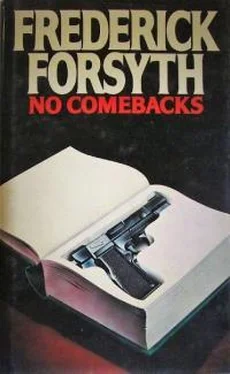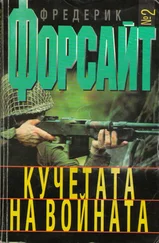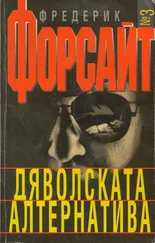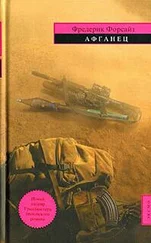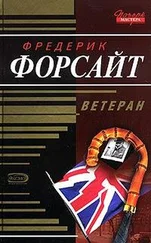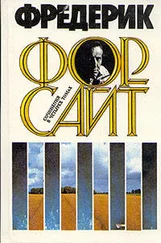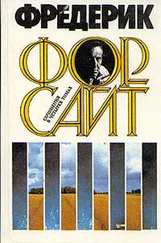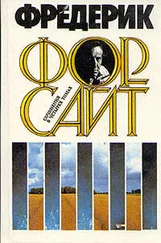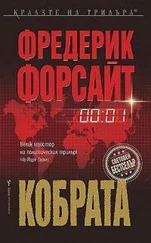'All right,' he said at last, 'you can fence it in and concrete over.'
Twenty minutes later, Professor McCarthy was on the line.
'I've got the limbs straightened out,' he said cheerfully. 'And the skin is soft enough to take the scalpel. We're draining and drying it off now. I'll begin in an hour.'
'When can you give me a report?' asked Hanley.
'Depends what you mean,' came the voice down the line. 'The official report will take two to three days. Unofficially, I should have something just after lunch. Cause of death at least. We've confirmed the ligature round the neck. It was a stocking, as I suspected yesterday.'
The pathologist agreed to come the mile from the Store Street morgue to Hanley's office by 2.30.
The morning was uninterrupted, save by Major Dawkins, who phoned at midday.
'Bit of luck,' he said. 'Found an old friend of mine in the records office at the War House. He gave me priority.'
'Thank you, Major,' said Hanley. 'I'm taking notes; go ahead.'
'There's not too much, but it confirms what we thought yesterday.'
What you thought yesterday, Hanley said to himself. This laborious English courtesy.
'Trooper Herbert James Larkin arrived on the Dublin ferry at Liverpool, October 1940 and volunteered for the Army. Basic training at Catterick Camp, Yorkshire. Transferred to the King's Dragoon Guards. Sent by troopship to join the regiment in Egypt in March 1941. Then we come to the reason he never made corporal.'
'Which was?'
'He was captured. Taken prisoner by the Germans in Rommel's autumn offensive of that year. Spent the rest of the war as a farm worker at a POW camp in Silesia, eastern end of the Third Reich. Liberated by the Russians, October 1944. Repatriated April 1945, just in time for the end of the war in Europe in May.'
'Anything about his marriage?' asked Hanley.
'Certainly,' said Major Dawkins. 'He was married while a serving soldier, so the Army has that on file, too. Married at St Mary Saviour's Catholic Church, Edmonton, North London, 14th of November 1945. Bride, Violet Mary Smith, hotel chambermaid. She was seventeen at the time. As you know, he got an honourable discharge in January 1946 and stayed on in Edmonton working as a storekeeper until 1954. That's when the Army has its last address for him.'
Hanley thanked Dawkins profusely and hung up. Larkin was thirty-four, turning thirty-five, when he married a young girl of seventeen. She would have been a lively twenty-six when they came to live in Mayo Road, and he a perhaps not so lively forty-three. By the time she died in August 1963, she would have been a still-attractive and possibly sexy thirty-five, while he would have been a perhaps very uninteresting and uninterested fifty-two. Yes, that might have caused problems. He waited with impatience for the visit of Professor McCarthy.
The state pathologist was as good as his word and was seated in the chair facing Hanley by 2.30. He took out his pipe and began leisurely to fill it.
'Can't smoke in the lab,' he apologized. 'Anyway, the smoke covers the formaldehyde. You should appreciate it.'
He puffed contentedly.
'Got what you wanted,' said Professor McCarthy easily. 'Murder beyond a doubt. Manual strangulation with the use of a stocking, causing asphyxiation; coupled with shock. The hyoid bone here' — pointing to the area between chin and Adam's apple — 'was fractured in three places. Prior to death, a blow to the head was administered, causing scalp laceration, but not death. Probably enough to stun the victim and permit the strangulation to take place.'
Hanley leaned back. 'Marvellous,' he said. 'Anything on year of death?'
'Ah,' said the professor, reaching for his attach^ case. 'I have a little present for you.' He reached into the case and produced a polythene bag containing what appeared to be a 6-inch by 4-inch fragment of yellowed and faded newspaper.
'The scalp wound must have bled a bit. To prevent a mess on the carpet, our murderer must have wrapped the area of the scalp wound in newspaper. While he built his oubliette behind the false wall, no doubt. By good fortune it's recognizable as a piece of a daily newspaper, with the date still discernible on it.'
Hanley took the polythene bag and through the transparent material, with the aid of his reading spotlight and magnifying glass, studied the newsprint fragment. Then he sat up sharply.
'Of course, this was an old piece of newspaper,' he said.
'Of course it's old,' said McCarthy.
'It was an old piece, a back number, when it was used to wrap the wound in the head,' insisted Hanley.
McCarthy shrugged.
'You could be right,' he agreed. 'With this kind of mummy, one can't be accurate as to the exact year of death. But reasonably so.'
Hanley relaxed.
'That's what I meant,' he said with relief. 'Larkin must have grabbed the newspaper lining a drawer, or a cupboard, that had been there for years untouched. That's why the date on the paper goes back to March 13th, 1943.'
'So does the corpse,' said McCarthy. 'I put death at between 1941 and 1945. Probably within a few weeks of the date of that piece of newspaper.'
Hanley glared at him, long and hard. 'Mrs Violet Mary Larkin died during August 1963,' he said.
McCarthy stared at him and held the stare while he relit his pipe. 'I think,' he said gently, 'we're talking at cross-purposes.'
'I'm talking about the body in the morgue,' said Hanley.
'So am I,' said McCarthy.
'Larkin and his wife arrived from London in 1954,' said Hanley slowly. 'They bought Number 38, Mayo Road, following the death of the previous owner/occupant. Mrs Larkin was announced as having run away and left her husband in August 1963. Yesterday, we found her body bricked up behind a false wall while the house was being demolished.'
'You didn't tell me how long the Larkins had been at that house,' McCarthy pointed out reasonably. 'You asked me to do a pathological examination of a virtually mummified body. Which I have done.'
'But it was mummified,' insisted Hanley. 'Surely in those conditions there could be a wide range in the possible year of death?'
'Not twenty years,' said McCarthy equably. 'There is no way that body was alive after 1945. The tests on the internal organs are beyond much doubt. The stockings can be analysed, of course. And the newsprint. But as you say, both could have been twenty years old at the time of use. But the hair, the nails, the organs — they couldn't.'
Hanley felt as though he was living, while awake, his only nightmare. He was bulldozing his way towards the goal line, using his strength to cut a path through the English defenders during that last Triple Crown final match in 1951. He was almost there, and the ball began slipping from his hands. Try as he might, he could not hold on to it…
He recovered himself.
'Age apart, what else?' he asked. 'The woman was short, about five feet three inches?'
McCarthy shook his head. 'Sorry, bones don't alter in length, even after thirty-five years behind a brick wall. She was five feet ten to eleven inches tall, bony and angular.'
'Black hair, curly?' asked Hanley.
'Dead straight and ginger in colour. It's still attached to the head.'
'She was about thirty-five at the age of death?'
'No,' said McCarthy, 'she was well over fifty and she had had children, two I'd say, and there had been remedial surgery done, following the second.'
'Do you mean to say,' asked Hanley, 'that from 1954, they — until Violet Larkin walked out, and Larkin alone for the past fifteen years — have been sitting in their living room six feet from a walled-up corpse?'
'Must have done,' said McCarthy. 'A body in a state of mummification, which itself would occur within a short time in such a warm environment, would emit no odour. By 1954, assuming she was killed, as I think, in 1943, the body would long since have achieved exactly the same state as that in which we found her yesterday. Incidentally, where was your man Larkin in 1943?'
Читать дальше
